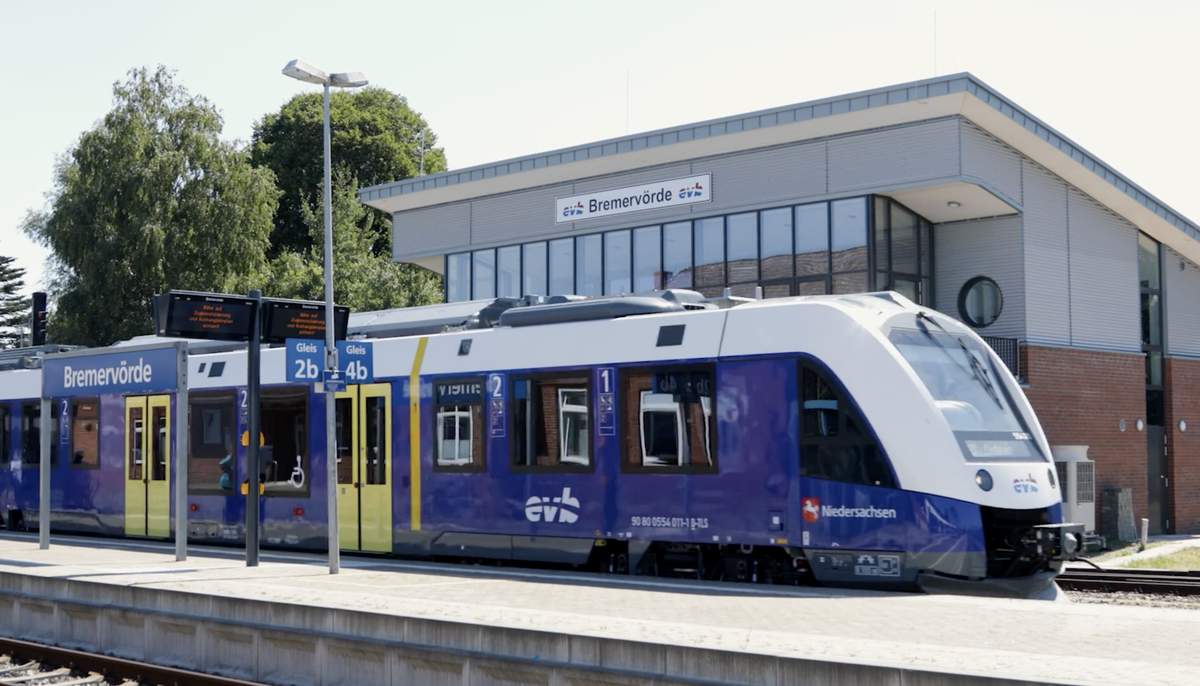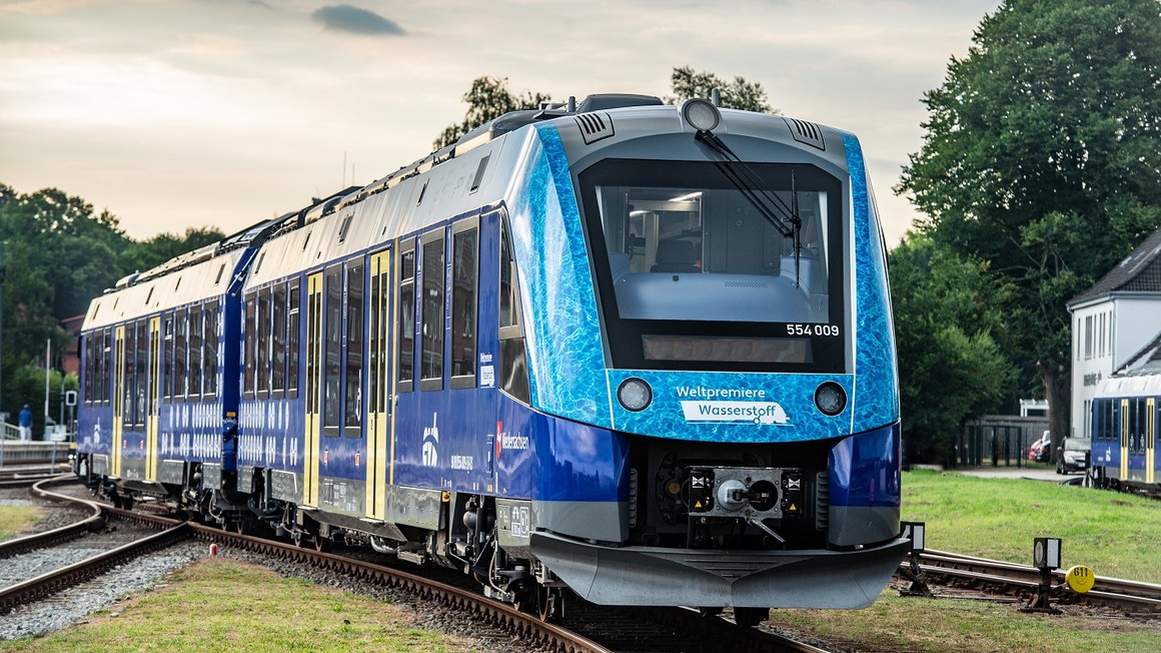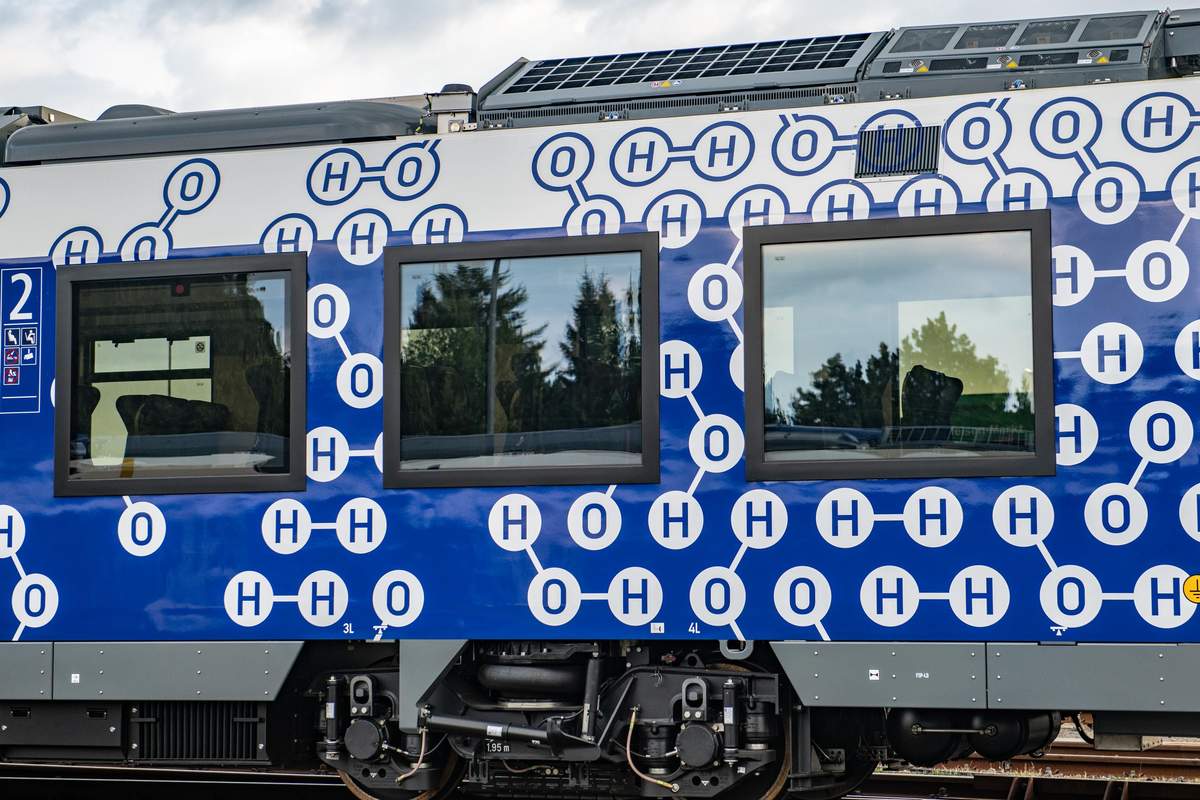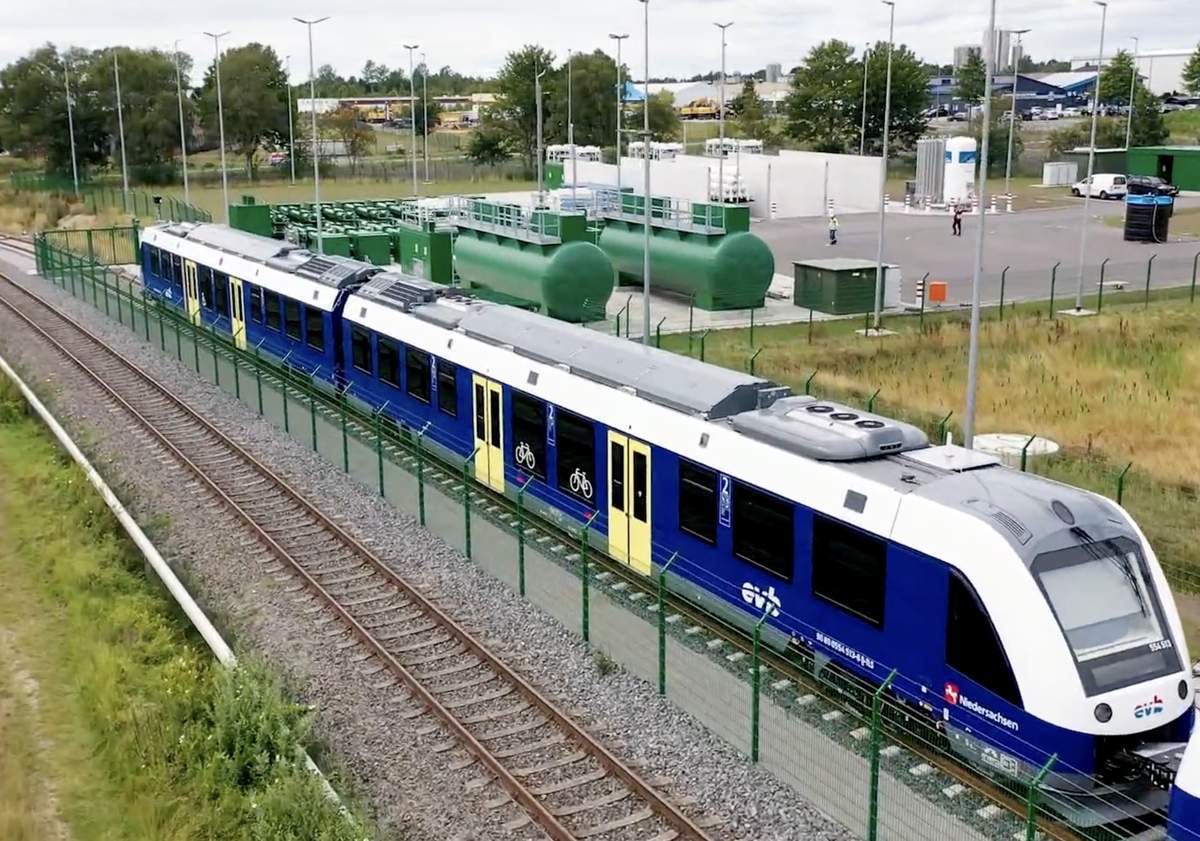Bremervörde, Germany —(Map)
The world’s first fully hydrogen-powered train line has officially begun running in Germany. The trains make almost no noise and run without polluting. Germany is planning to replace many of its diesel trains with hydrogen trains.
Last Wednesday, five hydrogen-powered trains began to make the 62 mile (100 kilometer) trip between Cuxhaven and Buxtehude in Germany. The new trains are part of a $92.5 million project by LNVG (Regional Transport Society of Lower Saxony). LNVG has been testing an early model of the hydrogen-powered trains since 2018.

(Source: Screenshot, EVB, via Alstom.)
Currently, most trains run on diesel power. When diesel fuel is burned, it creates carbon dioxide and other polluting gases. These gases have helped create the climate crisis. That’s one reason many countries are trying to find energy choices that pollute less.
Now the LNVG has decided that all the trains on the route will run on hydrogen. The trains, called Coradia iLint trains, are built by the French company, Alstom.
LNVG has ordered a total of 14 of the hydrogen-powered trains, which are expected to replace 15 diesel-powered trains by the end of the year. “We will not buy any more diesel trains,” said Carmen Schwable, speaking for LNVG.

(Source: Sabrina Adeline Nagel, Alstom.)
Hydrogen is the simplest known element. It’s also very common – 74% of the universe is made of hydrogen atoms. Pure hydrogen is a gas that burns easily.
Hydrogen can be used to create electricity by combining it with oxygen in a “fuel cell”. The chemical reaction which takes place creates electricity. A fuel cell is like a battery that never runs down as long as it has hydrogen. The oxygen comes from the air around the train. The best part is, when a fuel cell creates electricity, it doesn’t create pollution. The only thing it gives off is water, which comes out as steam.
The Coradia iLint trains run on electricity created by hydrogen fuel cells. If the fuel cells make too much electricity, it’s used to recharge the train’s batteries. Because the motor is electric, the trains run almost silently. That’s good for people both inside and outside the train.

(Source: Sabrina Adeline Nagel, Alstom.)
There’s a hydrogen station on the line to refuel the trains. But since the trains can go about 620 miles (1,000 kilometers) before they need more fuel, they only need to fill up once a day. The trains can go as fast as 90 mph (140 kph) – about the same as the diesel trains they are replacing.
Currently, Germany has about 4,000 diesel-powered trains, but it’s working to replace those. In many places across Europe, governments are adding electricity to train lines, so that trains can run on electricity. But that can cost a lot of money and isn’t always the best solution.

(Source: Screenshot, EVB, via Alstom.)
In many places, hydrogen-powered trains are a smart choice for replacing diesel trains. The city of Frankfurt, Germany has already ordered 27 of the Coradia iLint trains. Other countries are also interested. France and Italy have ordered several of the hydrogen-powered trains.
Stefan Schrank, who works for Alstom, believes that Germany could replace up to 3,000 of its diesel trains with hydrogen-powered trains.
Did You Know…?
Even though the trains don’t cause pollution, collecting the hydrogen to run them does create some pollution. That’s because even though there’s plenty of hydrogen on Earth, the hydrogen is almost always part of something else. Separating out the hydrogen requires some energy.
😕
This map has not been loaded because of your cookie choices. To view the content, you can accept 'Non-necessary' cookies.
